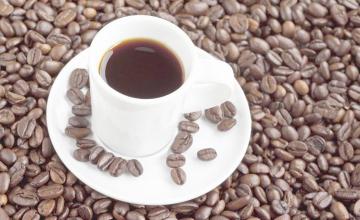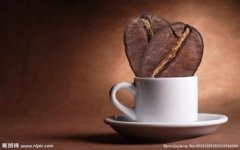Yega Xuefei Adoto Fine Coffee beans with elegant Fruit and Wine aroma treatment method of Grinding degree and Baking degree

Since 2006, some coffee processing plants in some producing areas have adopted the exquisite elevated shed sun drying method, which invests in high-intensity human labor, which isolates the coffee fruit from contact with the ground and prevents the miscellaneous smell of soil in the process of sunlight. create an unusually clean fruit flavor. After more than two weeks of sun exposure, dark brown coffee fruits are professionally stored, waiting for the whole flavor to ripen. Before sale, the sun-dried cherry pulp and sheepskin are removed, and then the unripe beans and over-fermented beans are removed. Strict control greatly improves the quality of sun-dried beans.
3. Flavor and characteristics
Washed Yega Chuefei has a unique lemon flavor, refreshing jasmine flavor, as well as soft fruit acid and citrus flavor, fresh and bright taste.
Sun Yega Chuefei has charming fruit acidity, clean fermented fruit sweet, elegant fruit wine, sweet finish.
4. Grade
The grading system of Ethiopian coffee is not based on the number of items, but on the proportion of defective beans in raw beans. In October 2009, Ethiopia launched the ECX boutique coffee trading classification system, and Q-Grader rated raw beans as follows:
Washed Yega Chuefei is divided into two grades: Grade 1 and Grade 2.
Grade 1, Grade 3, Grade 4 and Grade 5 are divided into sun Yega Xuefei.
Grade 1 is the highest grade, that is, Yega Xuefei with the lowest defect rate and the best quality.
Strictly speaking, Yega Xuefei is a by-product area of Sidamo. Located in the northwest of Sidamo, with mountains and lakes, the town is one of the highest coffee-producing areas in Egypt. However, the mode of production and flavor here are so outstanding that Egyptian coffee farmers compete to be proud of the flavor of their coffee, so they are independent from Sidamo and become the most famous producing area in Africa. At first, Yejasuefei's coffee trees were planted by European monks (somewhat similar to Belgian monks who advocated planting wheat and brewing beer), and later by farmers or cooperatives. Yejashafi is actually constructed by surrounding coffee communities or cooperatives, including Edido, Hafusa, Hama, and Bdon Yegashafi coffee beans near the Fog Valley, which are washed or sunburned to enhance their charming fruity aroma and mellow thickness. These mountain villages are foggy, like spring all year round, with a gentle breeze in summer, cool but not hot, rain but not damp, and no cold damage in winter, giving birth to a unique "regional flavor" of citrus and flower fragrance. Most of the caffeine trees are planted in farmers' own backyard or mixed with other crops in the field, and the yield per household is not much, which is a typical pastoral coffee. Almost all of the award-winning beans come from the above-mentioned coffee villages and communities.
Yejia Chuefei is mostly washed with water, but there are also a small number of excellent beans engraved in the sun to enhance the charming fruit aroma and mellow thickness. Coffee trees are mostly planted in farmers' own backyard or mixed with other crops in the field, the yield per household is not much, it is a typical rural coffee. These mountain villages are foggy, like spring all year round, with a gentle breeze in summer, cool but not hot, rain but not damp, and no cold damage in winter, giving birth to a unique flavor of citrus and flowers. The so-called "Yega Chuefei" refers to the strong aromas of jasmine, lemon, peach, almond and tea. Coffee entrance, flowers in full bloom! Just like a flower touches the comfort of taste buds and olfactory cells in the nasal cavity. In addition to the fragrance of the flowers, the delicate mellow thickness (body) is like silk massage in the mouth.
Traditionally, Yejasuefei uses the oldest sun treatment, but in 1972, Ethiopia introduced water washing technology from Central and South America in order to improve its quality, making its jasmine and citrus fragrance clearer and more refined. Yega Xuefei has become one of the best quality beans in the world, thanks to its superb washing technology. Since the 1970s and 1970s, this area has mainly been washed, making it the most popular water-washed bean producing area in Egypt. Sun Yega Chuefei sets a strict standard for collecting red fruits (as a result of coffee trees). Unripe green fruits or defective fruits are removed manually before exposure to coffee fruits, and damaged or moldy fruits are removed during the sun drying process. after two weeks, the flesh sugar and essence seep into the coffee beans, the water content is reduced to 12%, and then scrape the hardened pulp, pectin layer and pods with a planer. Take out the coffee beans and test the density and color of the beans. After eliminating the defective beans, the workers picked out the defective beans with the naked eye and screened them layer by layer, resulting in the cleanliness and vulgarity of Yejiaxuefei sun-dried beans and a strong attractive fruit aroma.
1. Planting system and environment
The cool and foggy mountain stream village in the Yega-Xuefei producing area is like spring all year round, with a gentle breeze in summer, cool but not hot, rain but not damp, and no cold damage in winter, making it the best environment for planting Arabica. There are no large coffee plantations. Coffee farmers mix coffee with other crops, usually under banana trees, to form a unique landscape.
2. Treatment method
The traditional way of tanning in Ethiopia is rough and smelly, which has been criticized by people. In 1959, the South American water washing method was introduced into the Yega Xuefei producing area. Most producing areas generally adopt the water washing treatment, that is, after the coffee fruit is peeled, the pectin layer is removed after fermentation and washing, and then dried.
Important Notice :
前街咖啡 FrontStreet Coffee has moved to new addredd:
FrontStreet Coffee Address: 315,Donghua East Road,GuangZhou
Tel:020 38364473
- Prev

Fruity Yejia Shefei Aduo Fine Coffee Bean Planting Location Climate Elevation Simple
Initially, Yegashefi's coffee trees were cultivated by European monks (a bit like Belgian monks growing wheat to brew beer), but later by farmers or cooperatives. Yega Shefi is actually constructed by surrounding coffee communities or cooperatives, including Idido, Harfusa, Hama, Biloa near Misty Valley, all washed with water.
- Next

A brief introduction to the description of flavor, taste and aroma characteristics of coffee beans with full fruit
Alishan Mazu Coffee is one of the best instant coffee, produced in Alishan, Chiayi County, Taiwan Province. Adhere to strict manual players to pick, draw mountain spring water fermentation, made from fully sunburned alpine coffee beans; Alishan Mazu Taiwan coffee beans are strictly grown in the Alishan mountain coffee beans at an altitude of 800m to 1300 meters above sea level, belonging to Arabica beans. Mafeel is taken from Afghanistan.
Related
- Detailed explanation of Jadeite planting Land in Panamanian Jadeite Manor introduction to the grading system of Jadeite competitive bidding, Red bid, Green bid and Rose Summer
- Story of Coffee planting in Brenka region of Costa Rica Stonehenge Manor anaerobic heavy honey treatment of flavor mouth
- What's on the barrel of Blue Mountain Coffee beans?
- Can American coffee also pull flowers? How to use hot American style to pull out a good-looking pattern?
- Can you make a cold extract with coffee beans? What is the right proportion for cold-extracted coffee formula?
- Indonesian PWN Gold Mandrine Coffee Origin Features Flavor How to Chong? Mandolin coffee is American.
- A brief introduction to the flavor characteristics of Brazilian yellow bourbon coffee beans
- What is the effect of different water quality on the flavor of cold-extracted coffee? What kind of water is best for brewing coffee?
- Why do you think of Rose Summer whenever you mention Panamanian coffee?
- Introduction to the characteristics of authentic blue mountain coffee bean producing areas? What is the CIB Coffee Authority in Jamaica?

